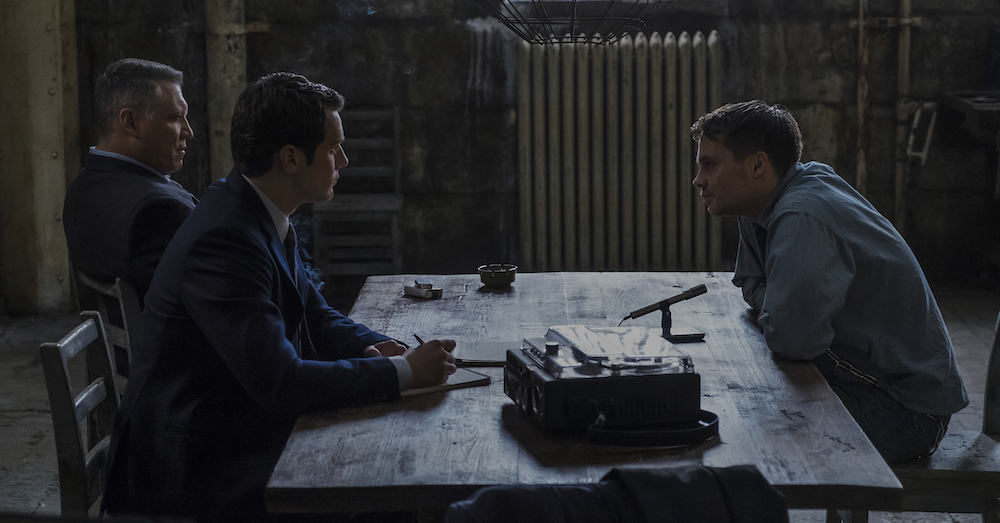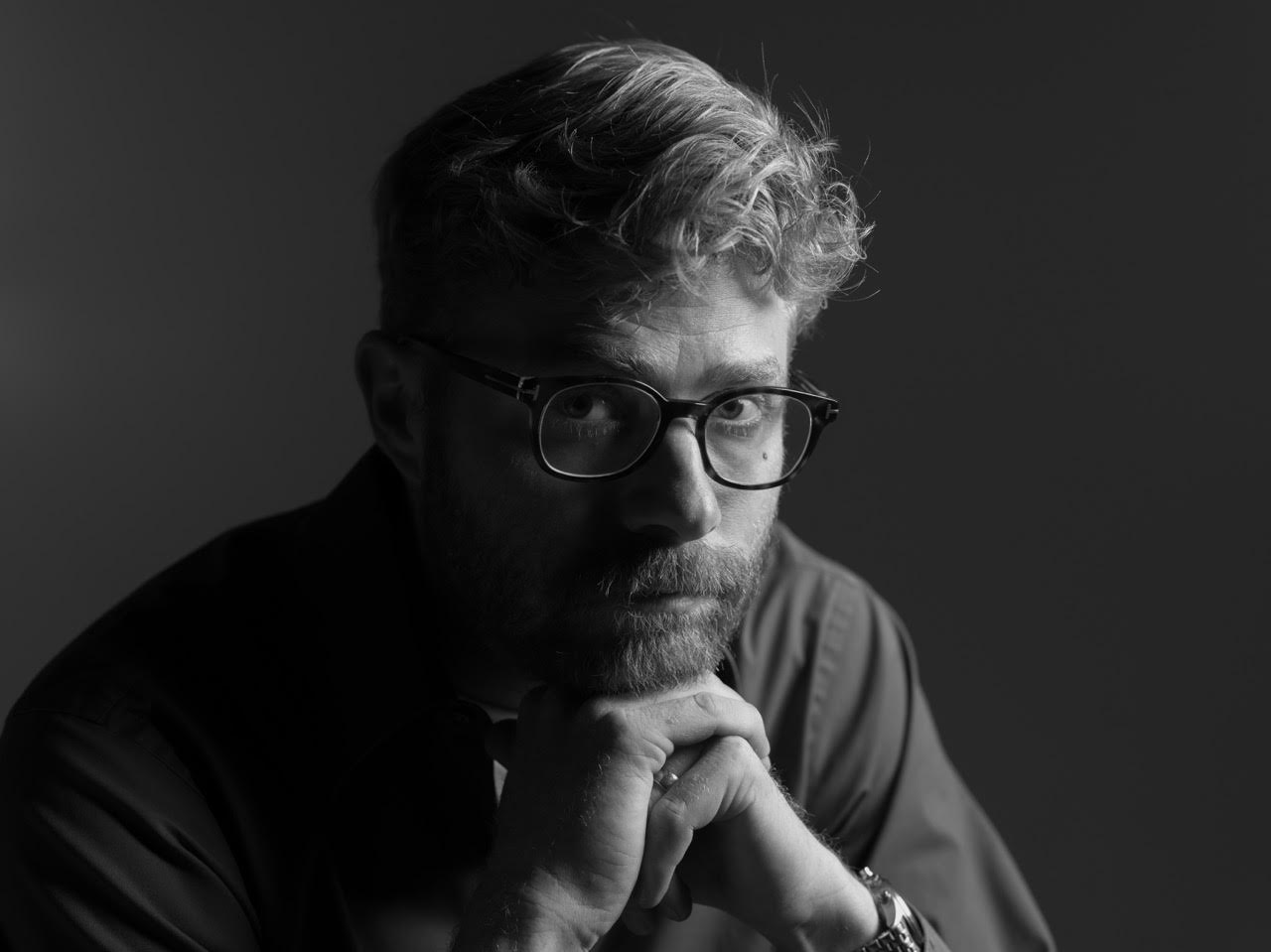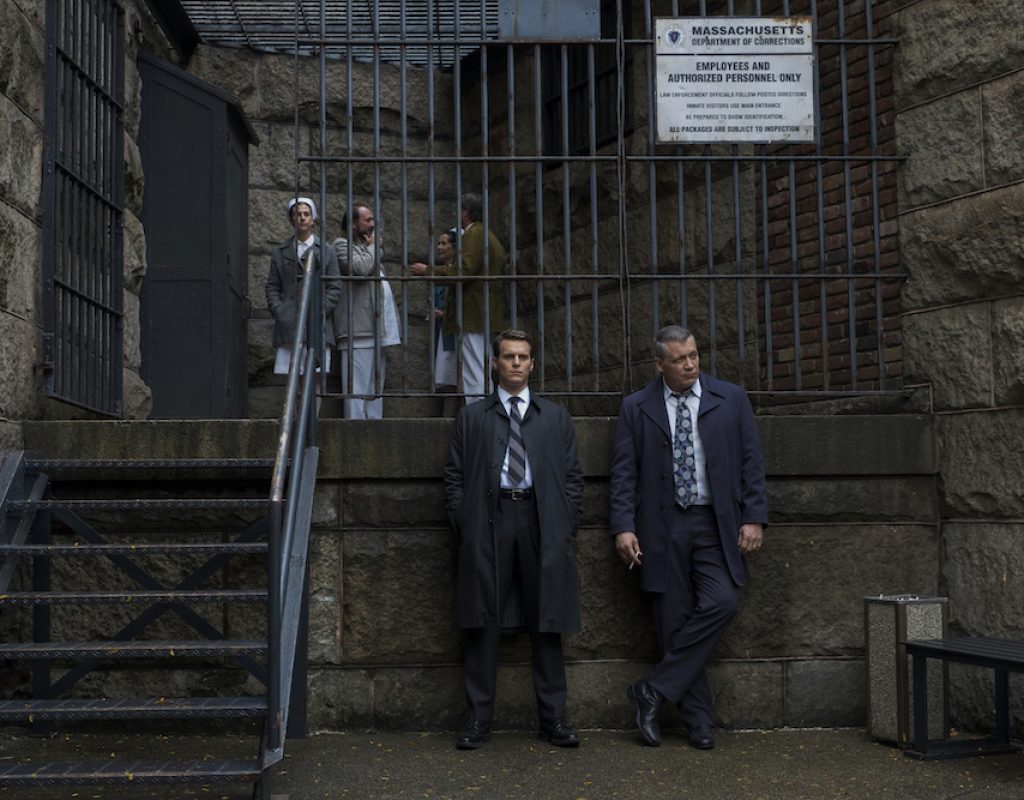Shot with a tailor-made RED camera, the RED XENOMORPH, auteur David Fincher chose cinematographer Erik Messerschmidt to helm camera for his latest, and possibly most ambitious project, the 10-episode Mindhunter series. Based on the novel Mind Hunter: Inside the FBI’s Elite Serial Crime Unit, Messerschmidt lensed actors Jonathan Groff and Holt McCallany during the extended production as they play FBI agents Holden Ford and Bill Tench. Focusing on the precocious criminal psychology work of the 1970s, the show centers on the duo as they attempt to understand the mind of a serial killer. Mindhunter is available to watch via Netflix now.

David Alexander Willis: You’ve had considerable experience in camera, lighting and electric, and as DP you’ve helmed several shorts and episodics along the way. When and why did you start to make the move from gaffing to camera? It must be an incredible honor as a filmmaker to be working with David Fincher! He’s considered to be a meticulous director. What was it do you think that gave him so much faith in you as his eyes on this extended series?
Erik Messerschmidt: I started as an electrician and grip out of film school and eventually moved into a career working as a gaffer. I was fortunate to work for some amazing cinematographers along the way; many whom became my mentors and close friends. Jeff Cronenweth, ASC and Claudio Miranda, ASC have been particularly amazing teachers. I had always thought of shooting as a long-term goal and I would periodically shoot small shorts, music videos and little jobs for friends. Jeff invited me to join him as his gaffer on the film Gone Girl and it was there that I met David Fincher for the first time. Gone Girl was a great experience for me. It was a very collaborative set and I was fortunate to be invited to participate on a creative as well as technical level.
When Fincher called about Mindhunter I was of course incredibly honored. It was a tremendous opportunity. David is extremely meticulous and detail oriented but he also has a specific aesthetic that percolates throughout every visual decision on the project. He and I share a lot of the same sensibilities, so it was a good match I think.

DAW: It’s not a secret that David Fincher tends to do a lot of takes. On top of that, you’re shooting at massive 6K resolution, in what I can only assume are top-shelf bit-rates? I imagine you may have been blazing new grounds with the DIT situation on this? The crew must be top-of-their-game to be able to orchestrate such an exponential amount of footage across a ten-episode season? What were the demands there?
EM: I didn’t use a DIT on Mindhunter. The goal was to streamline the process as Fincher likes to work very quickly and efficiently. Our on-set data workflow was not unlike film. We had a loader who managed our cards; he then sent them to editorial twice a day, where the editorial staff ingested and processed the footage using a NextLAB system. The beauty of that system was we often had dailies posted to PIX later the same day – or before call time the following day. We shot with a standard RedGamma3 look and processed with that correction so we didn’t grade dailies. I like working that way, it’s similar to making a one-light work print with film. I could see if our lighting wasn’t perfectly matched or if my exposures were off. I don’t like doing any live-color grading or fancy LUTs on set, as I feel you can easily start chasing your tail. I’d much rather make those decisions in the controlled environment of the DI and view a simple gamma curve and neutral color balance out of the camera. If I can get the dailies to look close to the way I want with lighting and exposure, I can always fine tune in the grade later.
DAW: The one-of-a-kind RED XENOMORPH made by RED for David Fincher was the only cam on this show? What was the genesis of this camera; was there something the production felt was missing from other available camera systems? I’m guessing with all the built-in wireless functionality, we should look forward to seeing a lot of unique remote and drone footage?
EM: The RED XENOMORPH design concept is something Fincher has been talking about for a long time. It’s an attempt to get back to the time when we could put a lens on the front of the camera and mag on the back and roll. These days we stick all sorts of aftermarket boxes on cameras to satisfy various needs. Timecode boxes, focus motors and MDRs, video transmitters, on-board monitors, etc. All these devices require power cables and the camera can quickly turn into a big mess. David said “look, if we need all this stuff, let’s build it into the camera.” So that’s what RED did for us. I think it’s great because we can put the lens and battery on and be shooting within minutes, all while maintaining the functionality the assistants need.
DAW: I know that David Fincher likes to stabilize for 4K deliverables, which Netflix requires, with extra framing. Was that the case here? The 33mm imaging circle of the Summilux-C lenses cover more than Super35, but they’re a bit smaller than the standard RED DRAGON 6K sensor; there weren’t any problems with vignette or his typical stabilization workflows?
EM: We framed for a 5K extraction within the full 6K aperture of the RED DRAGON sensor. This “look-around” area outside the reticle was used for re-framing and stabilization if needed. The extraction was ultimately scaled for a 4K delivery. There is a little tiny vignette with the wider Leica Summilux-Cs on the full 6K aperture, but we didn’t worry about it much.
DAW: The CW Sonderoptic Leica Summilux-C lenses are a relatively new system, why did you choose them for the Mindhunter series? Were there any favored focal lengths or other lenses during the course of the shoot?
EM: Fincher and Jeff Cronenweth had used the Summilux-Cs on Gone Girl and had a good experience with them. They are a nice compact lens system. The fact that all the lenses are the same size is particularly helpful to the assistants. I shot most of the show between T2-2.8. There were a couple instances where I needed to shoot near wide open, but I tried to keep it consistent as I like the focus fall off and depth of field characteristics of those apertures. Day exteriors I tried to work around a T4. The Summilux-Cs are remarkably flat and sharp lenses, but they do have a little bit of personality, which is nice I think. It’s important to me that the lenses are consistent in terms of color and contrast between sets. These were all spot on. We shot almost the entire show on the 29mm and 40mm lenses with the 65mm being used for some close-ups. I think we used the 18mm once.
DAW: Jarred Land posted a picture of the Plate Van prototype built by Global Dynamics United, a company owned by RED Digital Cinema’s Chief Design Officer, Matt Tremblay. It was designed with your co-DoP, Christopher Probst, and David Fincher. Did you get a chance to play with this system, and there must have been lots of other kinds of fun tech that came into play during this long shoot? What is it about the needs of Mindhunter that have required so much inventive new equipment? Red Digital Cinema, being a great fan of David Fincher’s work, seems to have given this production a kid-in-a-candy-store level of access to their technology?
EM: Chris Probst, Fincher and Jarred Land at RED did an amazing job developing the van for our driving plate photography. We shot all our driving work on stage using a video wall system provided by VER and the plates we shot also served as our interactive lighting content. We had developed that specific system on Gone Girl and David had used something similar on House of Cards. The van uses 11 RED cameras placed in 5 locations to capture all the background plates. We would line up all the car coverage in advance on stage with each director. Data like lens height, tilt, pan angle and focal length was recorded; then when we shot the plates those data points were used to set each camera position. The resulting plates dropped right in the green screen mattes with very little de-warping or perspective skewing needed. It was pretty turnkey.
David has a long history with Red Digital Cinema, starting with The Social Network and they were an incredible resource on Mindhunter. He is a director who likes to use technology to solve production problems and increase efficiency so the motivation isn’t really about the toys, it’s all driven by the work.
DAW: David Fincher directs four of the episodes himself, alongside directors Dane Tobias Lindholm, Andrew Douglas, and Asif Kapadia. Cinematographer Christopher Probst helmed two episodes, while you were lead for the majority of this first season on the other eight episodes. With so many chefs in the kitchen, how did that break down in terms of preproduction, planning and coordination? Were there any tough decisions for you about who got to shoot what?
EM: One of the unique challenges of television can be reconciling all the creative visions of different directors into one cohesive visual approach. It all starts with strong leadership at the producer level and having Fincher there as a sounding board for myself and the other directors was invaluable. A huge part of my role was to help the directors use the camera in ways that fit within the visual frame work we had designed for the show, so the storytelling felt consistent.
We didn’t have a steadicam for example, nor did we use handheld cameras, which a lot of directors are used to these days. If a director wanted to tell the story in one shot, or move the camera, we might paint out dolly track, roll on the floor and stabilize the shot, or use a crane. I was fortunate on Mindhunter to have prep time between episodes to work with each incoming director in pre-production and scout with key grip Paul Goodstein and gaffer Danny Gonzalez. This was invaluable. With the exception of Fincher, each director shot two consecutive episodes, so the show was a lot like making five little movies in a row instead of one long series.


